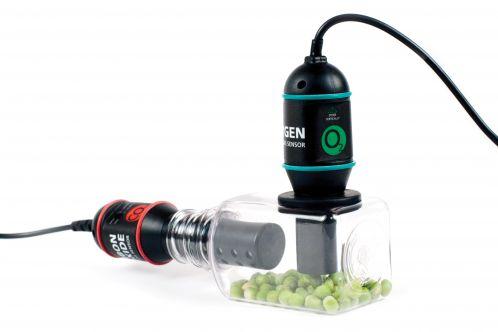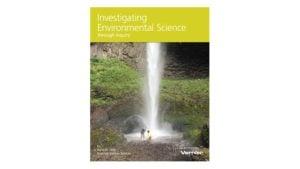Cell Respiration (CO2)
Experiment #14 from Investigating Environmental Science through Inquiry
- Subject
- Environmental Science

Introduction
Cell respiration refers to the process of converting the chemical energy of organic molecules into a form immediately usable by organisms. Glucose may be oxidized completely if sufficient oxygen is available by the following equation:
All organisms, including plants and animals, oxidize glucose for energy. Often, this energy is used to convert ADP and phosphate into ATP. It is known that peas undergo cell respiration during germination.
Objectives
In the Preliminary Activity, you will gain experience using a CO2 Gas Sensor as you determine the rate of respiration for germinating peas.
After completing the Preliminary Activity, you will first use reference sources to find out more about germination and cell respiration before you choose and investigate a researchable question.
Sensors and Equipment
This experiment features the following sensors and equipment. Additional equipment may be required.
Ready to Experiment?
Ask an Expert
Get answers to your questions about how to teach this experiment with our support team.
- Call toll-free: 888-837-6437
- Chat with Us
- Email support@vernier.com
Purchase the Lab Book
This experiment is #14 of Investigating Environmental Science through Inquiry. The experiment in the book includes student instructions as well as instructor information for set up, helpful hints, and sample graphs and data.


